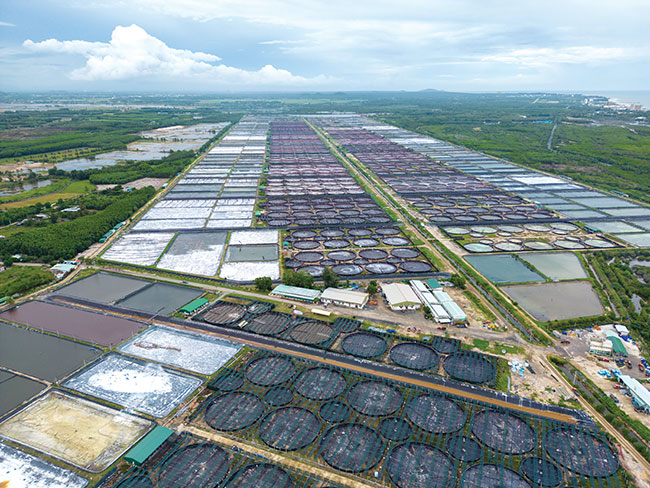| |
| |
 |
 |
| |
 |
|
@{mv_date_MMM d, yyyy}@ |
|
| |
 Omega-3 fatty acids demand is greater than supply. To that end, Nofima scientist Bente Ruyter conducted research to find out how farmed salmon can get a higher content of omega-3 in the body. One option is oil from modified canola, a variant of common rapeseed.
» Read More...
Omega-3 fatty acids demand is greater than supply. To that end, Nofima scientist Bente Ruyter conducted research to find out how farmed salmon can get a higher content of omega-3 in the body. One option is oil from modified canola, a variant of common rapeseed.
» Read More...
Brittany Jellison, an assistant professor in the Department of Biological Sciences in the UNH College of Life Sciences and Agriculture, is seeking to understand how the recent lack of juvenile lobsters could impact sea life. Jellison and graduate student Todd Stelling are using a new experimental system at UNH’s Coastal Marine Lab (CML) that enables them to manipulate the chemistry of incoming ocean water.
» Read More...
A Kenyan mud crab farm, CrabsAlive, has produced its first batch of crablets from its hatchery. Justin Aniere, chief executive officer of CrabsAlive, has been involved in mud crab farming for over a decade, but with support from Scylla, in November 2023, they produced Africa’s first batch of crablets and has been followed up with a second batch in December, with crablets settling just after Christmas.
» Read More...
|
| |
 |
 |
| |
|
| |
 The global hatchery industry has austere times ahead. Inflation and climate change are major themes being felt around the world. Hatchery operators are being faced with economic and ecological challenges that need urgent solutions. Once again, the editorial team at Hatchery International comes together to take stock of the regions they report from, and bring us a bird’s eye view of the industry’s state of affairs.
» Read More...
The global hatchery industry has austere times ahead. Inflation and climate change are major themes being felt around the world. Hatchery operators are being faced with economic and ecological challenges that need urgent solutions. Once again, the editorial team at Hatchery International comes together to take stock of the regions they report from, and bring us a bird’s eye view of the industry’s state of affairs.
» Read More... |
| |
| |
|
| |
 This time of year we are all making assessments and goals and the same goes for hatcheries. Did last year’s production and business go as planned? How can we be proactive to make this one the best year yet? One way hatcheries can make advancements in production and economics is by being on trend; whether it is altering hatchery space allocation to address the latest production demands, or adopting new technology to reduce costs.
» Read More...
This time of year we are all making assessments and goals and the same goes for hatcheries. Did last year’s production and business go as planned? How can we be proactive to make this one the best year yet? One way hatcheries can make advancements in production and economics is by being on trend; whether it is altering hatchery space allocation to address the latest production demands, or adopting new technology to reduce costs.
» Read More...
|
| |
|
| |

|
| |
|
| |

|
| |
| |









